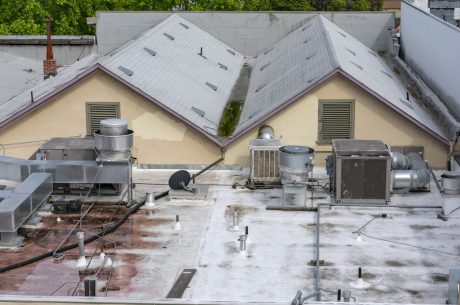 When’s the last time your to-do list included a reminder to clean your washer and dryer? These two standard household appliances get a lot of use, yet are often overlooked when it comes to regular upkeep. Each has its specific maintenance requirements that will prevent issues like washer leaks and dryer fires. Some of what’s needed to clean your washer and dryer are simple DIY tasks that can be done in a minimum amount of time. Other items may require the services of a professional, especially if routine maintenance has been neglected over the years.
When’s the last time your to-do list included a reminder to clean your washer and dryer? These two standard household appliances get a lot of use, yet are often overlooked when it comes to regular upkeep. Each has its specific maintenance requirements that will prevent issues like washer leaks and dryer fires. Some of what’s needed to clean your washer and dryer are simple DIY tasks that can be done in a minimum amount of time. Other items may require the services of a professional, especially if routine maintenance has been neglected over the years.
Cleaning the Washer
By definition, shouldn’t a “washer” keep itself clean? Actually, no. The mixture of warm soapy water and bacteria from dirty clothes and other fabrics builds an unpleasant residue in the washer tub, pipes, and water pump. Odors can result and mold, and mildew can grow in parts of the unit you would never see with a casual inspection. At least twice a year or more often if you’re a frequent washer, take these simple steps to disinfect and clean the internal parts of your machine.
- Pour two cups of baking soda into an empty washer. Baking soda has an abrasive quality mixed with water and helps to scrub the interior surfaces and passageways of the machine. Set the unit to run a long cycle with hot water and turn it on.
- Next, add two cups of white vinegar to your washer and run another long cycle with hot water. The acidic quality of vinegar kills mildew, strips away mineral deposits and has disinfectant qualities, too. If you have it, also add about ten drops of tea tree oil or lavender oil.
- After cycling the baking soda and the vinegar, wipe down the internal surfaces of the tub, including rubber seal or agitator with a clean cotton cloth soaked with vinegar. Remove the detergent dispenser and use an old toothbrush to scrub away accumulated grime with baking soda and vinegar.
Cleaning the Dryer
While steps to clean your washer and dryer have aesthetic paybacks, cleaning the dryer can be a safety matter, too. According to the U.S. Fire Administration, almost 3,000 house fires every year are started by dryers. On an average, five deaths, 100 injuries and $35 million in property loss result. Highly-flammable lint accumulates in the unit’s lint trap or inside the vent exhaust pipe, constricting the flow of hot exhaust air. If airflow is reduced sufficiently, intense heat builds inside the dryer, igniting clothes and lint and causing a fast-spreading indoor fire.
- Every dryer has a removable lint trap that should be cleaned after every load of clothes is dried. Consult the manufacturer’s instructions for details on locating and removing the lint trap, as well as how to clean it effectively.
- Periodically, vacuum the area behind the dryer to remove dust and any stray lint.
- Check the airflow exhausted from the end of the dryer vent pipe often. If the amount of air coming out seems to diminish, lint may be clogging the vent pipe. Another symptom of a vent clog is that clothes aren’t thoroughly drying anymore, even though the drying time is unchanged.
- Clean out any lint from the vent pipe that is visible and accessible. Visually checking and cleaning the entire span of a metal dryer vent pipe by yourself may not be possible. If you suspect exhaust airflow is declining, contact a qualified plumber or appliance service person for a complete inspection. They have the tools and expertise to inspect and remove lint from the entire length of the pipe.



 PuroClean Restoration Specialists
PuroClean Restoration Specialists